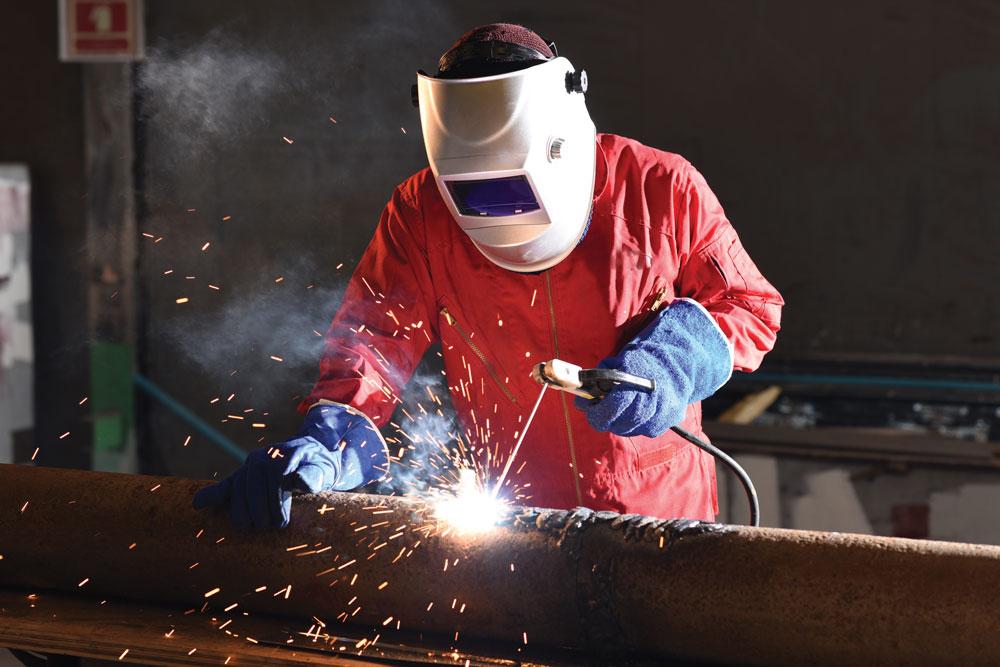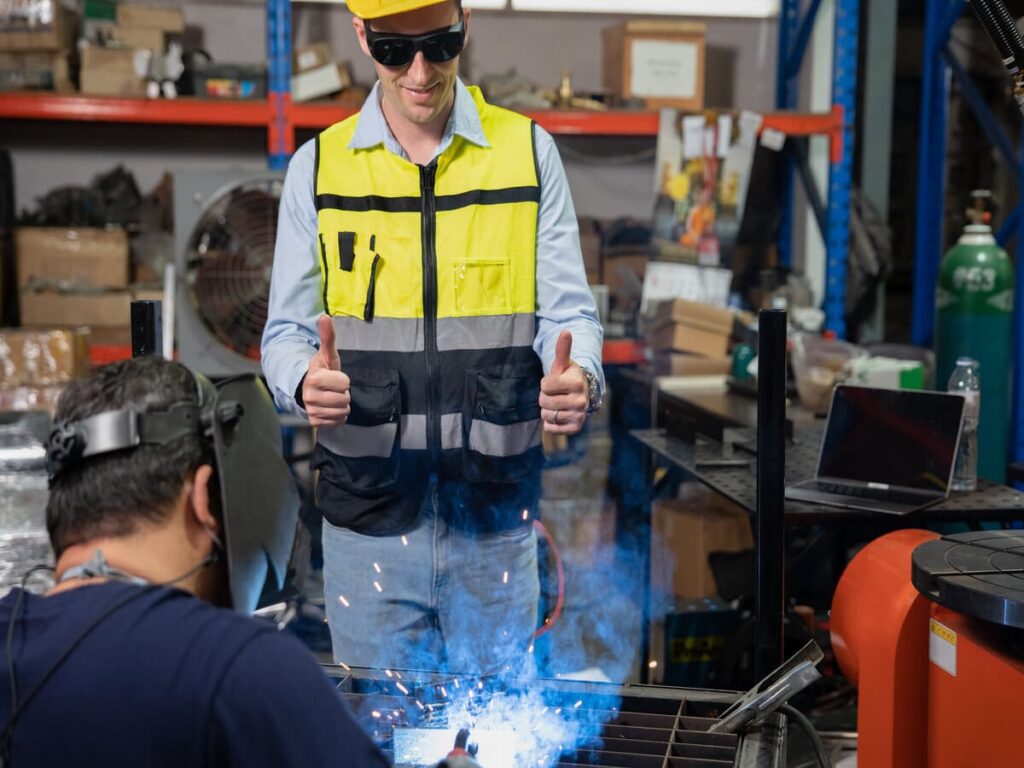The Ultimate Guide to Welding Inspection Racine for Industrial Specifications
The Ultimate Guide to Welding Inspection Racine for Industrial Specifications
Blog Article
Cutting-edge Strategies to Fillet Weld Examination and Testing: Enhancing Weld High Quality and Compliance Requirements
In the realm of welding, the quality and integrity of fillet welds play a crucial role in ensuring the architectural sturdiness and dependability of different industrial parts. With the consistent drive for enhanced efficiency and conformity with rigid standards, the expedition of cutting-edge approaches to fillet weld examination and screening has actually become essential.
Advanced Non-Destructive Screening Techniques
Making use of advanced technologies, progressed non-destructive testing methods play a critical role in making certain the stability and quality of fillet welds. These techniques, such as phased range ultrasonic testing (PAUT) and magnetic bit screening (MPT), offer detailed understandings into the weld's interior framework without causing any kind of damage to the material. PAUT, for instance, utilizes numerous ultrasonic elements to check the weld from numerous angles, offering a thorough visualization of potential problems like absence of blend or cracks.
By employing these advanced non-destructive testing strategies, weld examiners can precisely examine the top quality of fillet welds, guaranteeing conformity with sector requirements and policies. The ability to detect flaws early on not just improves weld quality yet likewise avoids costly rework or failings in structural honesty, highlighting the importance of these innovative screening methods in welding inspections.
Robotics and Automation in Inspection
The assimilation of robotics and automation has actually transformed the examination process for fillet welds, enhancing effectiveness and accuracy in top quality assessment. Robotics supply exact control and repeatability in inspecting welds, making certain constant and reliable outcomes. Automated systems can be programmed to adhere to particular examination paths, making certain complete coverage of welds and lowering the risk of human error.
Robot evaluation systems equipped with sophisticated sensors can find and determine weld features with high accuracy, giving in-depth information for analysis. These systems can determine issues such as fractures, lack of blend, and porosity, enabling timely corrective activities to be taken. Additionally, robotics and automation enable real-time information collection and analysis, offering prompt feedback to operators and promoting quick decision-making processes.
Moreover, making use of robotics and automation in fillet weld evaluation boosts overall efficiency by lowering inspection times and enhancing evaluation throughput. By simplifying the examination process, manufacturers can ensure weld quality and conformity criteria are fulfilled efficiently, inevitably leading to cost savings and enhanced product top quality.
Utilizing Artificial Intelligence for Analysis
Fabricated intelligence plays a pivotal function in enhancing the performance and accuracy of evaluation in fillet weld evaluation processes. AI algorithms can rapidly refine substantial amounts of data from weld examinations, finding issues or incongruities that may be testing to identify with the nude eye - Welding Inspection Racine.
Moreover, AI systems can gain from previous inspection data, continually enhancing their capacity to identify potential flaws and inconsistencies in fillet welds. This adaptive knowing ability boosts the total quality assurance procedure, minimizing the chance of human mistake and guaranteeing that welds meet the needed requirements. By incorporating expert system into fillet weld analysis, industries can achieve higher levels of efficiency, consistency, and compliance in their evaluation methods.
Portable Equipment for On-Site Assessment
 Enhancing field assessment performance, the fostering of mobile devices revolutionizes on-site assessment processes for fillet welds. These devices use adaptability and ease, permitting assessors to conduct extensive assessments in different areas, including remote or tough settings. Mobile devices such as ultrasonic screening tools, magnetic fragment examination equipment, and electronic radiography systems give real-time information and high-resolution imaging capacities, making it possible for fast decision-making and instant feedback on weld quality.
Enhancing field assessment performance, the fostering of mobile devices revolutionizes on-site assessment processes for fillet welds. These devices use adaptability and ease, permitting assessors to conduct extensive assessments in different areas, including remote or tough settings. Mobile devices such as ultrasonic screening tools, magnetic fragment examination equipment, and electronic radiography systems give real-time information and high-resolution imaging capacities, making it possible for fast decision-making and instant feedback on weld quality.One considerable advantage of portable tools is their ability to simplify examination treatments, minimizing downtime and boosting total productivity. Assessors can conveniently transport these tools to various work sites, eliminating the demand for moving hefty equipment or elements to off-site centers. Furthermore, the mobility of these tools promotes cost-effectiveness by minimizing transport expenditures and speeding up evaluation timelines.
Moreover, the use of mobile devices for on-site assessment promotes aggressive top quality control steps, as assessors can immediately identify and attend to any possible welding flaws or discrepancies. By including these ingenious modern technologies into on-site inspection methods, welding professionals can make sure compliance with sector standards and boost weld quality, inevitably resulting in boosted structural honesty and security in numerous welding applications.
Integration of Information Monitoring Solution
Having actually enhanced on-site examination processes with the utilization of portable devices, explanation the following phase entails the smooth combination of information management systems to better enhance effectiveness and information evaluation abilities in fillet weld inspection and testing. Welding Inspection Racine. By incorporating information monitoring systems into the evaluation process, companies can simplify information collection, storage, and analysis. This combination enables for real-time surveillance of weld quality, immediate More Info identification of flaws, and punctual decision-making to fix any issues that may occur during the assessment procedure
Information management systems play an important function in systematizing examination information, assisting in very easy accessibility for accredited personnel, and guaranteeing data stability and safety. With the combination of these systems, examiners can produce detailed records, track historical information for fad evaluation, and enhance general process efficiency. Additionally, the combination of data management systems enables smooth interaction in between various stakeholders entailed in the examination procedure, cultivating cooperation and boosting total quality control measures. Eventually, the combination of data monitoring systems serves to boost the requirements of fillet weld inspection and screening, guaranteeing conformity with industry laws and improving weld top quality.
Final Thought
In verdict, innovative techniques to fillet weld examination and testing have significantly enhanced weld high quality and conformity standards. Advanced non-destructive screening approaches, robotics, automation, artificial intelligence, portable tools, and information monitoring systems have actually transformed the method weld examinations are conducted. By using these innovations, sectors can make certain that welds meet the required high quality requirements and guidelines, eventually enhancing general performance from this source and safety and security in welding processes.

By employing these advanced non-destructive testing methods, weld examiners can precisely examine the high quality of fillet welds, making sure conformity with market requirements and guidelines. Mobile devices such as ultrasonic testing tools, magnetic fragment inspection equipment, and electronic radiography systems provide real-time data and high-resolution imaging capabilities, enabling quick decision-making and immediate responses on weld high quality.
Having enhanced on-site assessment processes through the application of mobile devices, the next phase entails the smooth assimilation of data management systems to better boost effectiveness and data analysis capacities in fillet weld inspection and screening (Welding Inspection Racine). Eventually, the combination of data administration systems serves to boost the requirements of fillet weld inspection and screening, ensuring conformity with industry laws and improving weld quality
 In verdict, ingenious approaches to fillet weld examination and testing have actually significantly improved weld quality and conformity standards.
In verdict, ingenious approaches to fillet weld examination and testing have actually significantly improved weld quality and conformity standards.Report this page